Editing and Interview The Kanto Team
Images ABungalow Artists’ Foundation
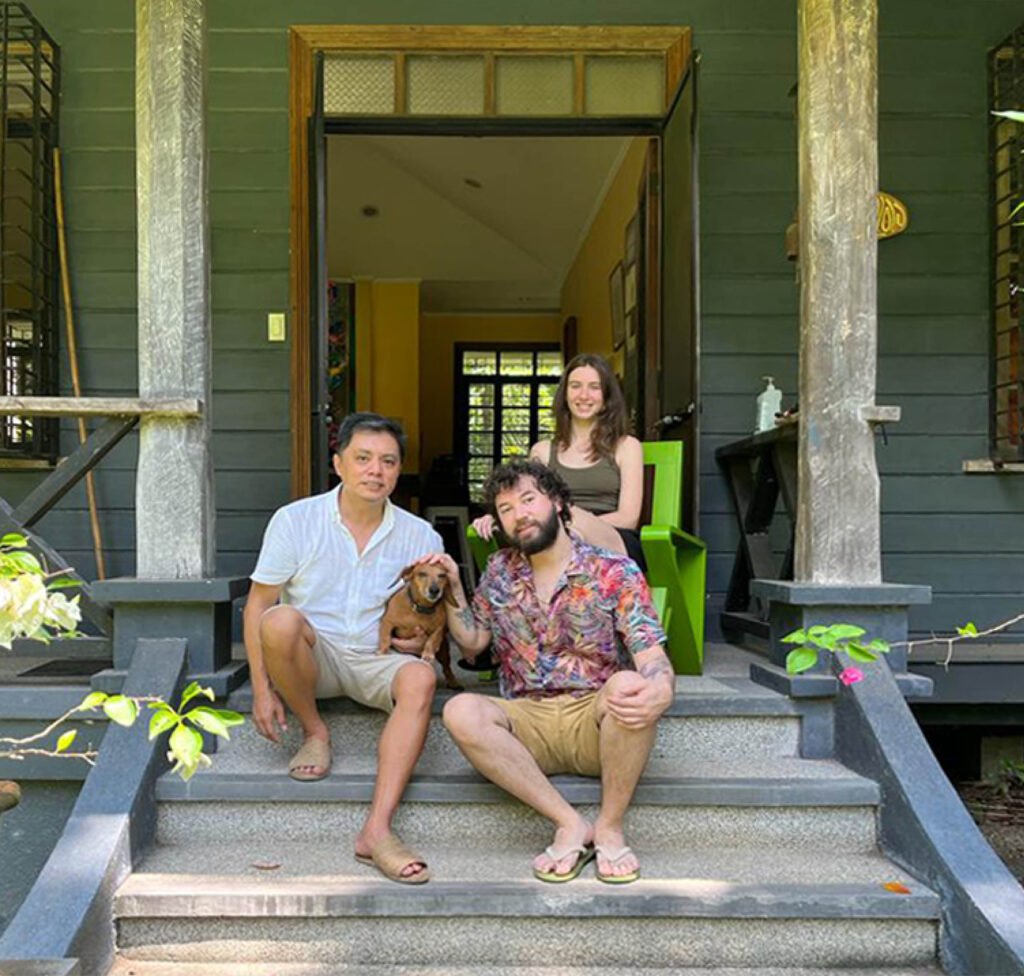

ABungalow Artists’ Foundation
“Echoes of the Jungle’s Sweet Surrender”
The end-of-residency exhibition by Pablo Bermudez
curated by Alessia Terzaghi
July 14th, 2023, at Balay ni Tana Dicang
36 Rizal Street, Talisay City, Philippines
Nature, when closely observed, reveals its forms and extraordinary peculiarity, exuding a mystical presence that only art can capture in its true essence.
Pablo Bermudez’s works reflect a profound contemplation of nature, harmonizing humans with the world and achieving a collective consciousness akin to a nirvana—an idyllic garden where nature and humans coexist without division between organic and inorganic matter; each complements the other.
His seemingly abstract art stems from a naive creative act, where photography surrenders to abstract painting, leading to a delightful destruction and deconstruction of the real image.
With a gestural intensity almost akin to ritual, the artist breaks free from the mass media’s influence that has long guided his research. Liquefied nature engulfs the photographed subjects, forming an entangled dance of forms, where vivid colors intermingle with reddish masses akin to agglomerates of living flesh.
In this imagined alchemical vessel, barriers dissolve, and formless beings meld seamlessly with natural space, reveling in an orgiastic and carnal connection with the universe.
Throughout history, humans have imitated natural forms, drawn to their inherent allure. The artist, similarly drawn to nature’s gravity, reminisces about the Colombian jungle, his native land, which he’ll miss deeply. However, in Negros, he finds echoes of his homeland through the similar nature of jungle and sugarcane crops, bridging connections between the two countries.
In his photographic shots, Balay ni Tana Dicang’s architecture coexists harmoniously with nature, transcending oblivion as a timeless mediator between past, present, and future. The house cradles cherished memories and beloved objects of its inhabitants, a precious legacy of past centuries.
This fundamental relationship between nature and human work, and the memories they hold, is inseparable. Architecture, in essence, becomes a vessel to preserve the past, anchoring our memories.
Through Bermudez’s works, we perceive the vastness of the ecological system we’re part of, transcending anthropocentric boundaries to embrace a more interconnected vision of life on Earth.
Art awakens to the anthropocene, forging an emotional connection between people and the natural world, renewing our sense of wonder and respect for nature. It challenges our perceptions, fostering awareness for a sustainable future of living in harmony.
Text by Alessia Terzaghi.
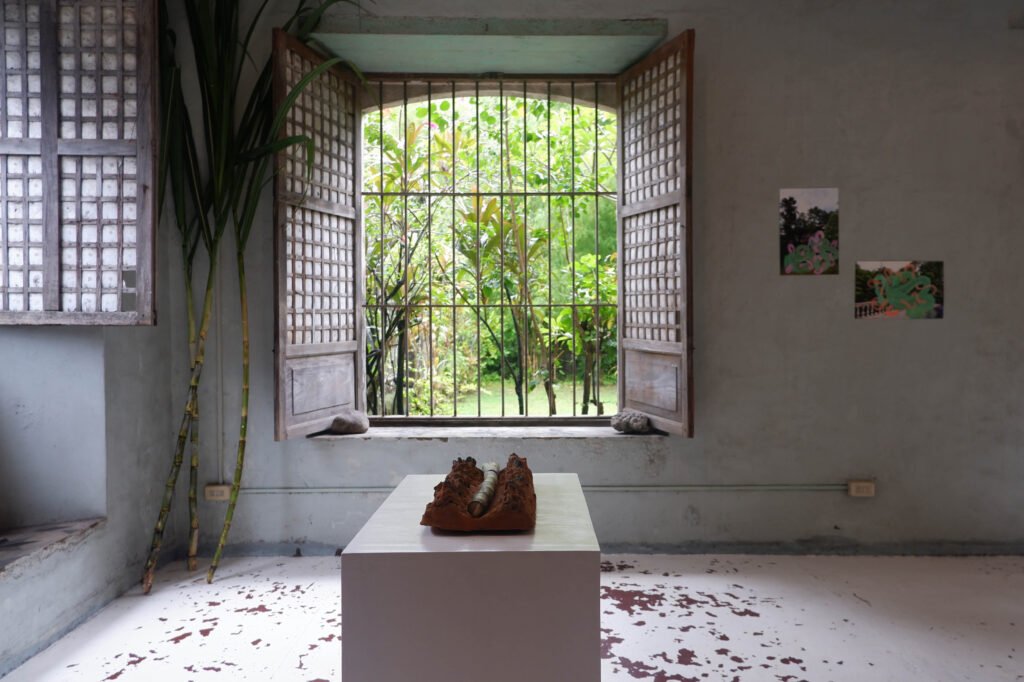
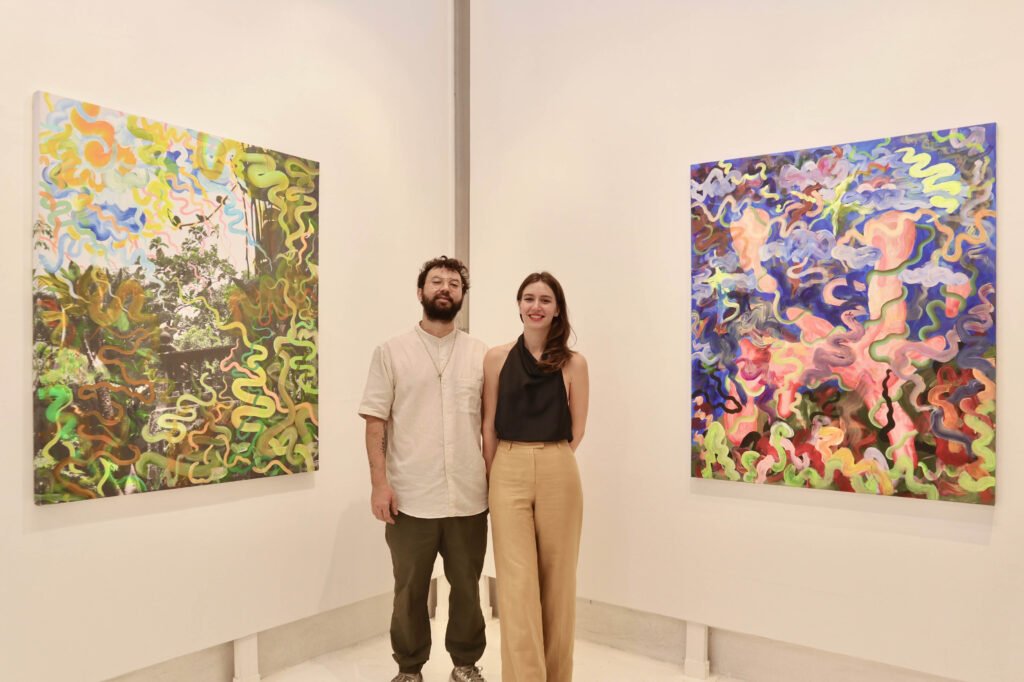

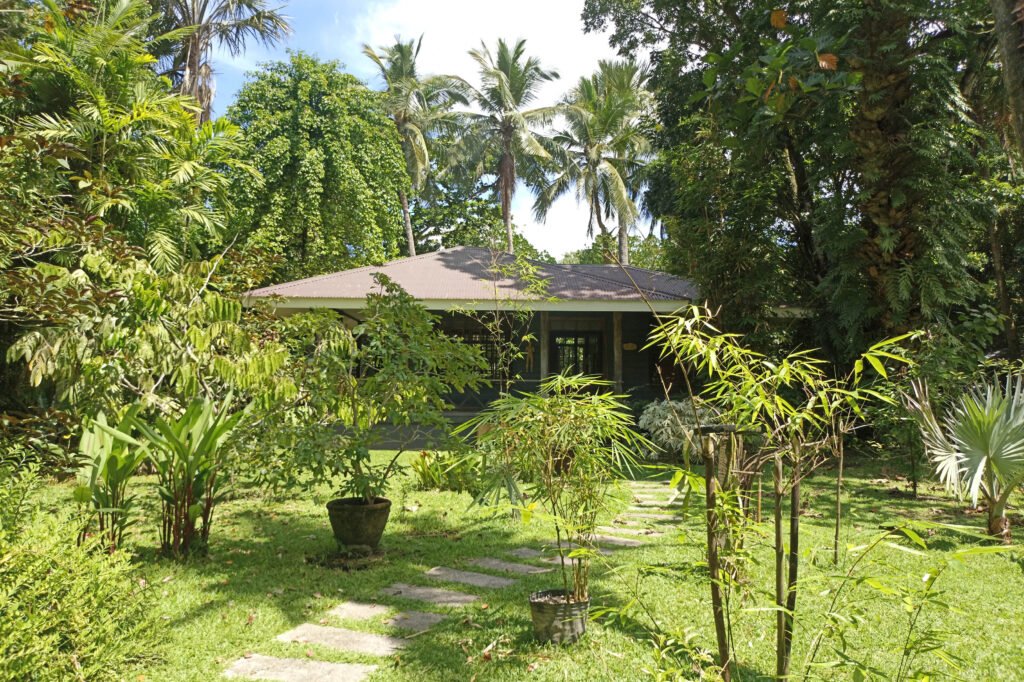
Can you share what experiences and discoveries during the residency led to your exhibition “Echoes of the Jungle’s Sweet Surrender,” which reflects a profound contemplation of nature?
Pablo Bermudez, ABungalow resident artist: The ABungalow project art residency, founded by Adrian Lizares (curator of Balay Museum and grandson , is surrounded by a tropical garden on the border between the mangroves and the city of Talisay.
The two months spent here were two months of contemplating this tropical landscape, the singing of birds, and the sound of rain accompanied the entire production of the exhibition and so it was an instinctive choice to reflect on the contemplation of nature.
Your art blends photography and abstract painting. Could you explain how you break down real images to create abstract works and how this process contributes to the overall message of the exhibition?
Bermudez: I try to create a sensual dialogue between the photographic image and painting, a kind of dance between photographic figures and abstract pictorial signs.


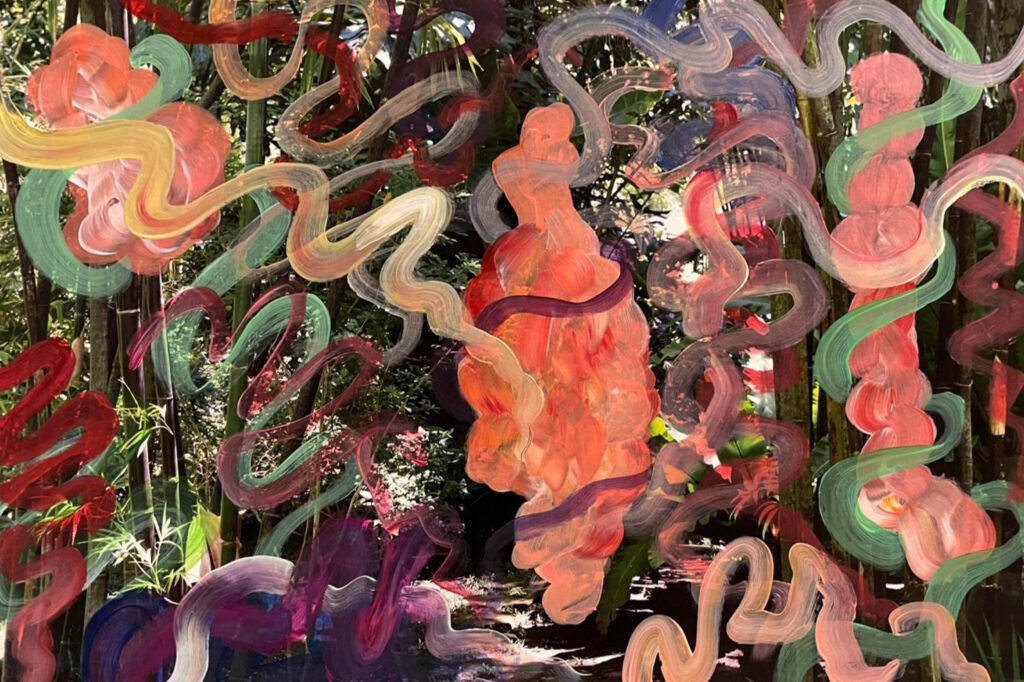

You mentioned feeling a connection to nature and the jungle in your native Colombia. How did this resonate with your time in the Philippines during the residency? Were there specific experiences that inspired some of your artworks?
Bermudez: Landing at the Bacolod-Silay airport, the first thing I noticed was the geography, with expanses of sugarcane and tropical jungle, equal to Colombian landscapes, especially Cali, my mother’s hometown. I displayed a poem that accompanies my sculpture “Sugarland,” it is a work by Gabriel de la Concepción Valdés (Plácido) entitled “La flor de la caña.” This poem, in Spanish, is a connection to my country, Colombia, and these lands, linked not only by the same tropical climate but also by the same colonial past.
You have now been living and working in Manila. How has this new environment influenced your art, and have you found any interesting contrasts or similarities between the creative scenes in different countries?
Bermudez: I have lived about half my life in Colombia, half in Italy, and for the last year, I have been living in Manila. I find a lot of cultural exchange and cross-pollination between these nations reflected in my work.
What interests me are the diverse cultural interactions through which art is experienced. In the Philippines, painting undoubtedly holds a prominent role in the art scene, while in Italy and Colombia, there is a noticeable emphasis on conceptual exploration. Specifically in Colombia, performance and activism form an integral part of contemporary art, shaping its unique identity.
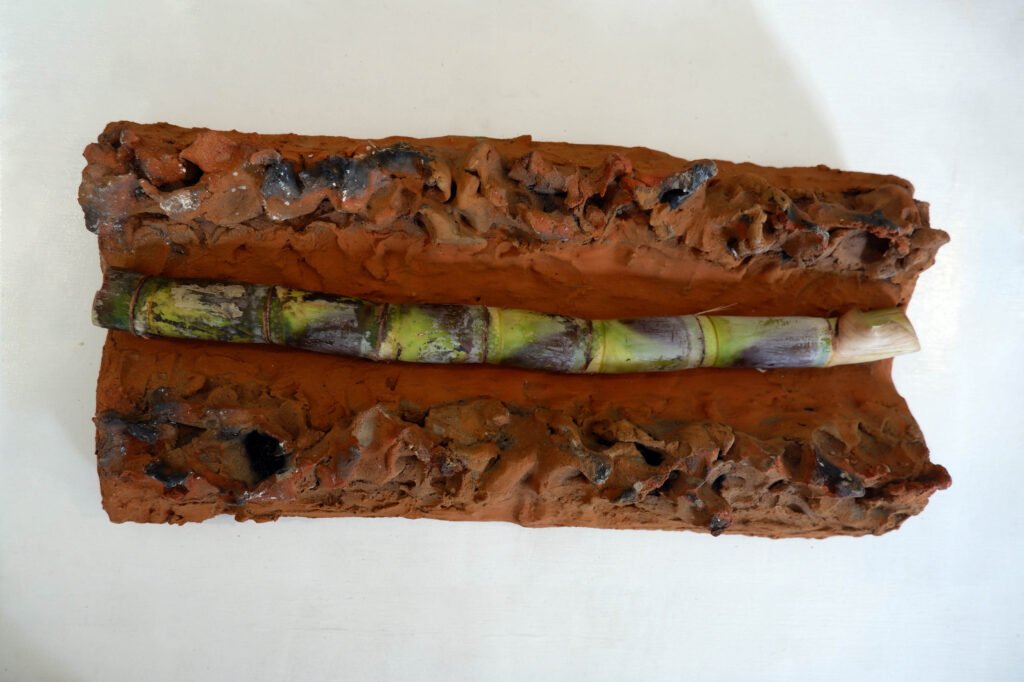

The interconnectedness of nature and humanity seems central to your work. Could you elaborate on the concept of a collective consciousness and how it manifests in your art?
Bermudez: For me, there is no difference between humanity and nature; we are the ones who have created a barrier. As I create these works, I imagine an ideal reality in which each consciousness is individuality and plurality at the same time.
Balay ni Tana Dicang, the exhibition venue, appears to be integral to your show with its architecture blending with nature. How did the venue influence your creative process, and what message do you intend to convey through this integration of architecture and nature in your artworks?
Bermudez: Balay ni Tana Dicang is no mere exhibition gallery; it breathes life as a genuine house museum, boasting a rich history and unique aesthetic features. To me, architecture is dynamic—it thrives, fades, and evolves alongside the people who once called it home. With this in mind, I aimed to craft artworks that seamlessly blend with the space they inhabit, narrating its captivating history and perpetual transformation.
Your biography mentions your previous work “Vacuum” with glamorous paper magazines. How has your artistic journey evolved from that to your current exhibition?
Bermudez: I have always worked in the post-production of mass media images, through destructive actions aimed at decontextualizing the original content, creating a completely new image. In this exhibition, the chance to explore a fresh context encouraged me to take the photographs myself. Additionally, I found myself engaging in a dialogue with the images rather than disrupting them. Guided by their essence, I incorporated my painterly gestures to complement the backdrop’s landscape, allowing a seamless blend of photography and painting to unfold.


Tropical Garden_5, acrylic on photo paper, 12″X18″ 
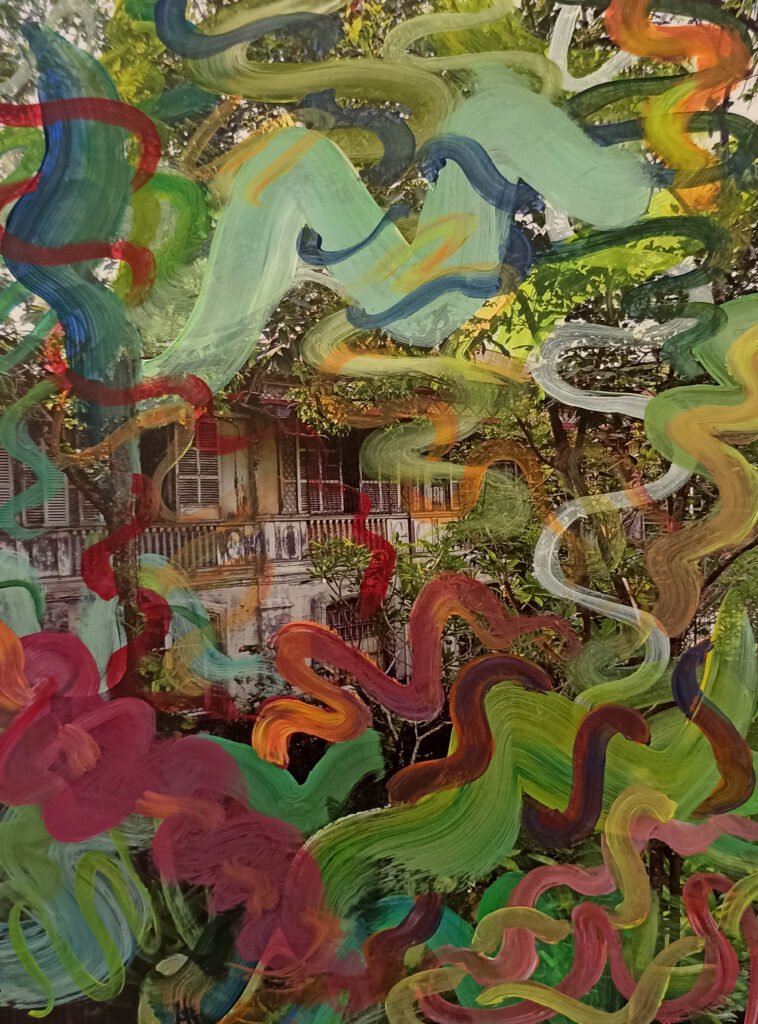
Tropical Garden_7, acrylic on photo paper, 12″X18″
The exhibition also touches on the preservation of memories and the importance of architecture in safeguarding the past. How does this theme connect to your portrayal of the natural world and its relation to human history?
Bermudez: The work of art carries within it an impression, a memory that will be forever preserved and thus handed down to future generations.
What do you hope viewers will take away from “Echoes of the Jungle’s Sweet Surrender”? What emotions or thoughts do you aim to evoke in your audience?
Bermudez: I would like the viewer to feel welcomed into their mnemonic place, detached from me.
“Echoes of the Jungle’s Sweet Surrender” addresses ecological consciousness and the importance of a sustainable future. How do you see art’s role in raising awareness and promoting harmony between people and the natural world?
Alessia Terzaghi, curator: I believe that art possesses a unique ability to touch people in a more direct manner as compared to other disciplines. Its advantage lies in awakening our most personal emotions, fostering a direct connection with the viewer. By addressing crucial matters like ecology, art can wield an impactful influence, touching individual consciences and becoming a fundamental catalyst for raising awareness in all fields.
The magnetic allure of art extends beyond mere aesthetics, embracing contemporary issues with its transformative power.
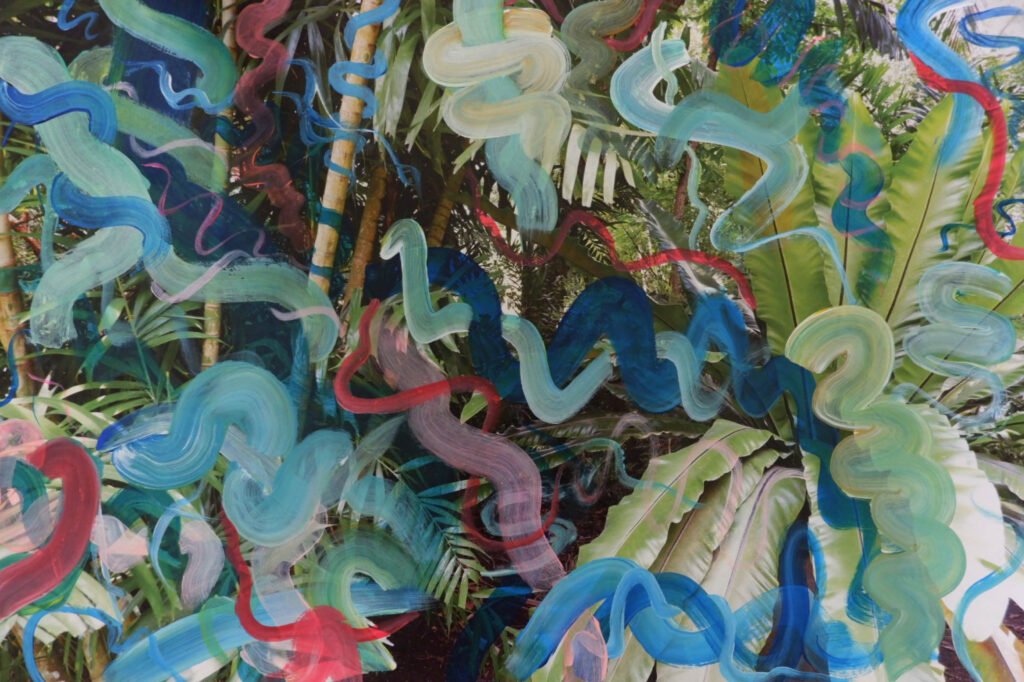

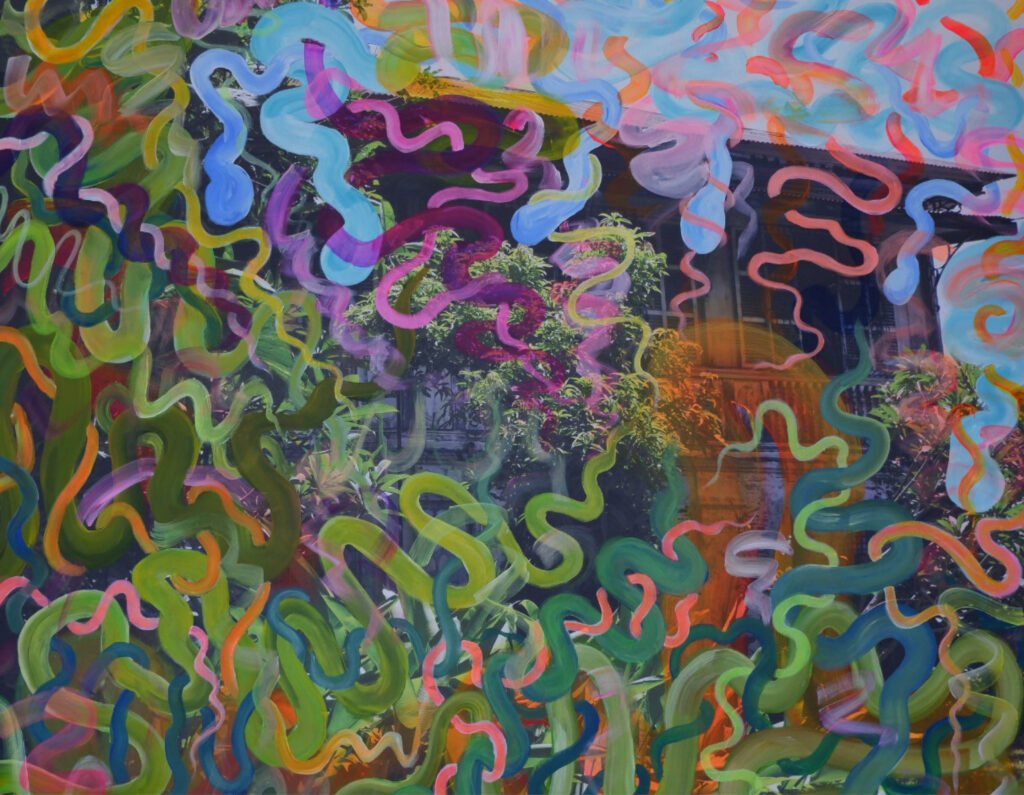

Are there any specific aspects or lessons from your early years and mentorships that you carry with you as a constant source of inspiration or guidance in your ongoing artistic exploration?
Bermudez: Giuliano Collina, an Italian artist born in 1938 was my professor at the Academy of Art; I had the opportunity to be his assistant for some years. For me, he is a constant source of inspiration in my art. Above all, he taught me the way to live and see art from multiple points of view and with passion.
Looking ahead, do you plan to continue exploring similar themes in your future artworks, or do you envision your artistic journey taking a different direction?
Bermudez: Yes, I think I will continue to develop what I started with this exhibition, especially the abstraction of the image through painting, developing the photographic image on the canvas, and investigating its pictorial possibilities.
Terzaghi: As a curator, it was very important for me to be able to participate in the art residency, having the opportunity to follow the entire production of the works, participating actively in the choice of the theme to be explored, and seeing the ideas that were to be developed materialize over time.
I felt it was important from the beginning to know the history of the place where the final exhibition would take place to have an interconnected dialogue between artistic production and the house museum. No less important was the possibility of getting in touch with the local culture, meeting people, and visiting places that inspired the works and reflections around them.
I think it’s very interesting that all the works produced during the two-month residency were displayed in the final exhibition so that the whole journey that took place would be evident. •
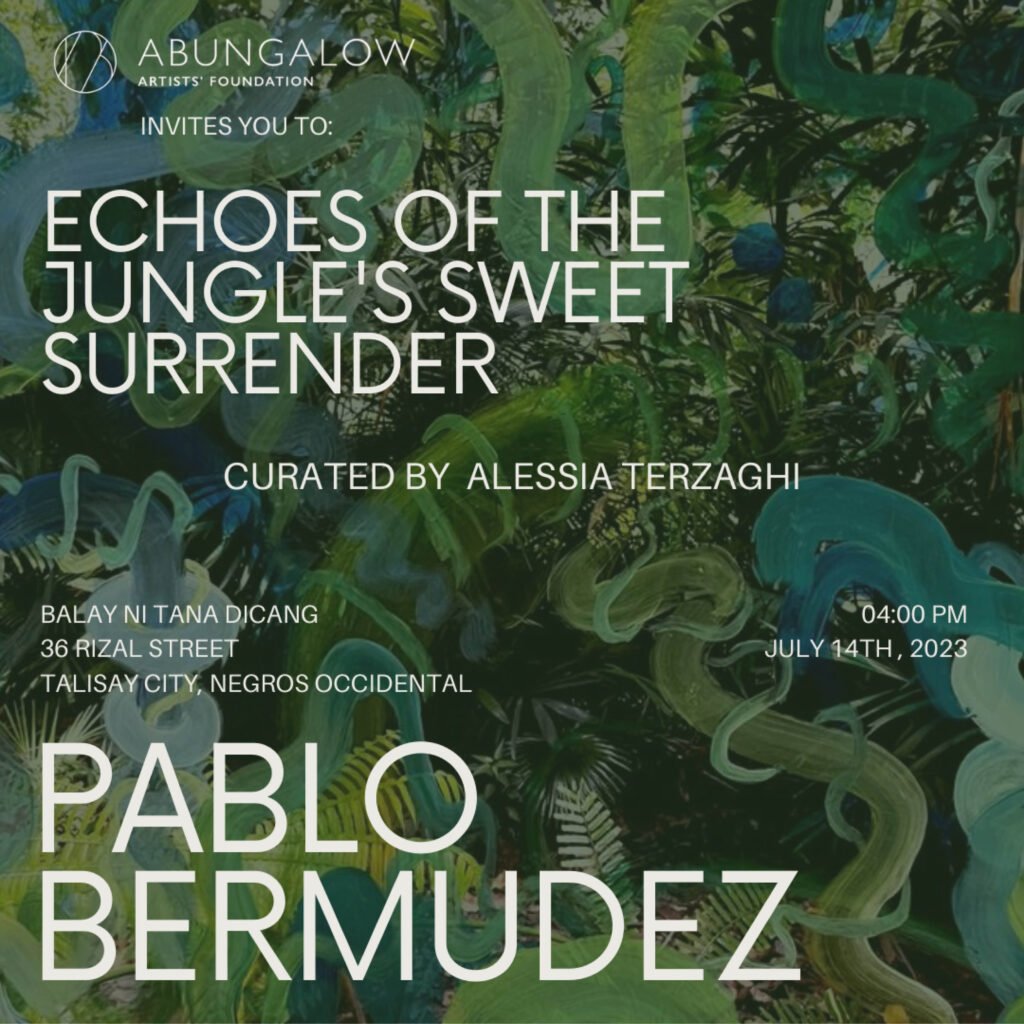

ABungalow Artists Foundation
The ABungalow project serves as an artist residency in Negros Occidental, Philippines. It offers a different setting, providing artists with fresh perspectives on life, culture, and the arts, ultimately influencing their works on the island.
Founded in 2016, the ABungalow project emerged from the realization of visiting artists, who recognized the liberating time and space it offers for creating new works. Since then, it has continued to support numerous artists in residence, renewing and invigorating their creativity through this enriching experience.

